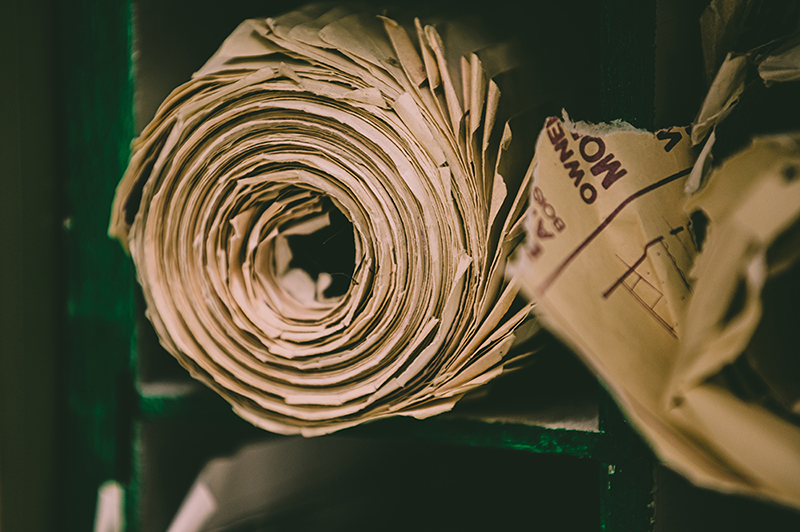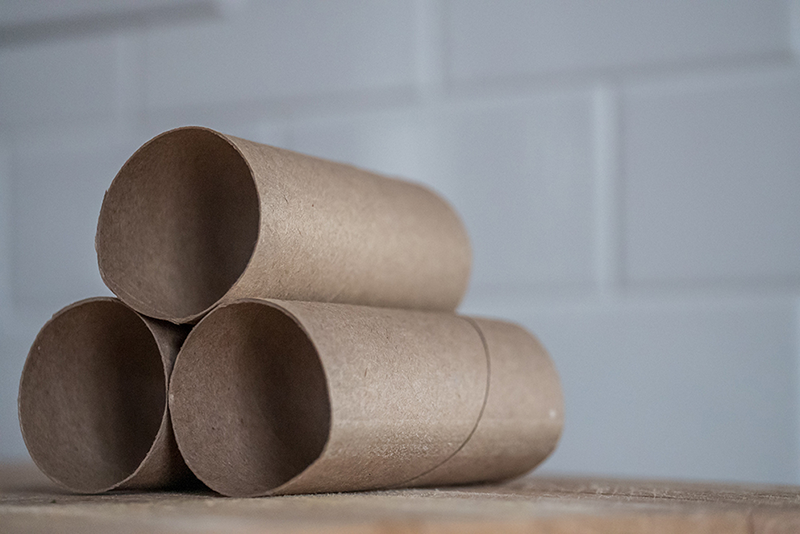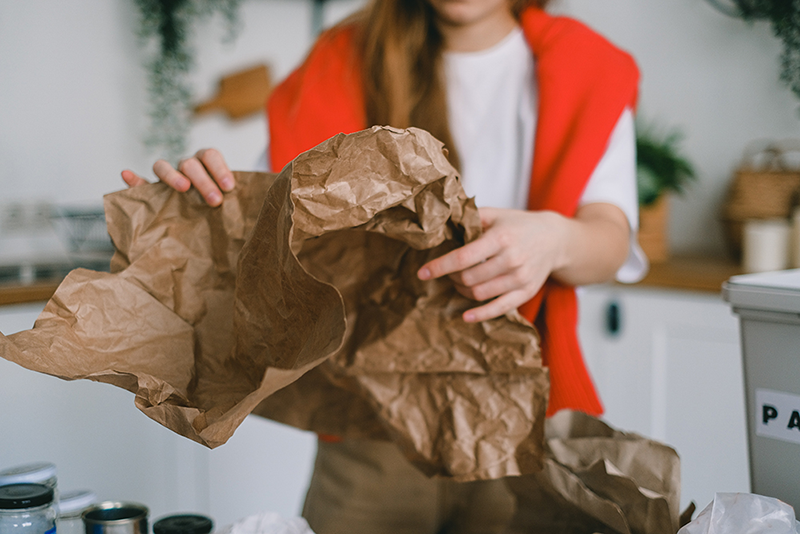Fix Nitrogen-Heavy Compost
When compost is made up only of kitchen scraps and green yard and garden waste (such as lawn clippings and dead plants), it will likely become too nutrient dense and be more like fertilizer than a rich potting soil. As a result, planting in this kind of compost or using too much of it can damage or even kill your plants!
If you have a lot of carbon-dense plant matter, such as twigs or heavy tree leaves (such as oak or maple), this can correct the problem. If not, adding paper products is absolutely necessary for composting a balanced potting mix that won’t burn your plants and has a fluffy, moisture-retaining texture.

What Products Can I Compost?
Any paper product that’s free of plastic or toxic inks can be composted. Brown paper grocery bags are often marked as compostable on the bottom or sides, but if you’re not sure, just tear off the parts with ink, as well as any metal clips or plastic windows. Newspapers nowadays are printed with compost-safe, soy-based black inks, but don’t compost any pages with color print. Cardboard boxes are compostable, but be sure to cut away any portions with ink and to remove any staples or packing tape.
Non-glossy computer paper is compostable, but if it has any printing on it, you’ll want to make sure that the ink in your printer’s cartridge is plant-based (most are).
Unfortunately, most paperboard food packaging cannot be composted because it’s covered in a polyethylene coating to make it shiny. The same is true of magazines and many disposable plates and cups, but plain white ones are biodegradable and safe to compost. Oddly enough, compostable plastic cups and flatware cannot be composted in home compost as they require a high heat, high pressure municipal compost.
Other items you can compost include facial tissues, construction paper, toilet paper cardboard rolls, paper towels, cotton swabs (as long as they’re not the plastic kind), and toothpicks.
Layering and Turning
If you are composting large sheets of heavy paper and cardboard, it’s a good idea to tear them into smaller pieces and to avoid placing stacks of paper or cardboard directly into a compost pile. Because paper is dry and has fewer nutrients, it will take longer to break down if it isn’t surrounded by dirt and nitrogen-rich compost. Also, large sheets of paper and cardboard can reduce oxygen flow to the soil or compost beneath.
Layering paper with other compost will keep your microbial processes consistent throughout your pile for an even breakdown. Also, be sure to turn your compost every few weeks.

Environmental Benefits
A carbon-rich compost pile is good for more than just making potting soil. Compost sequesters carbon into the “fast” carbon cycle by making it nutritionally available for plants, insects and microbial life. You can use finished compost to transform dusty, dry and barren areas of ground into lush, carbon-capturing green plant life. Alternately, sprinkle dried compost over lawns, fields and grassland in forest areas to help increase the carbon capture abilities of the plants for many years to come.


